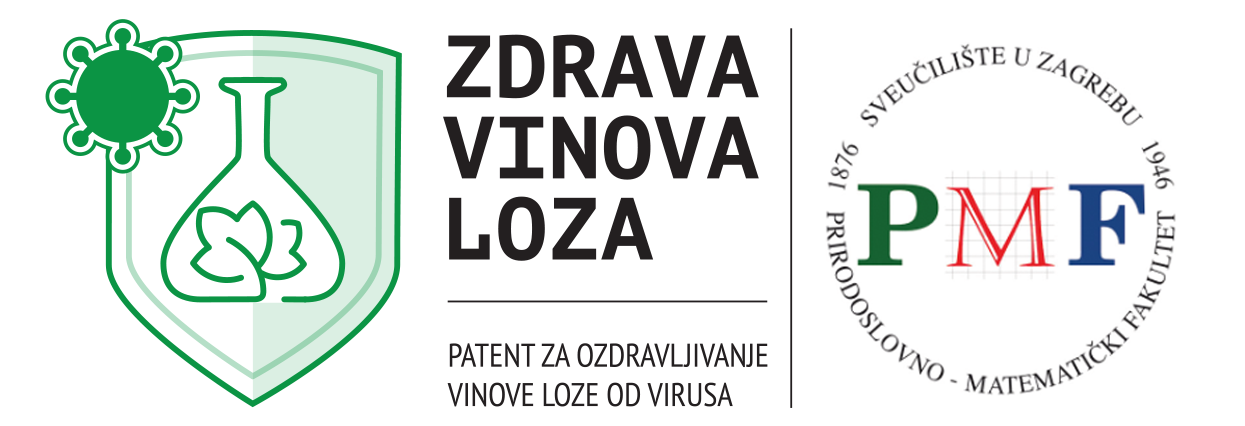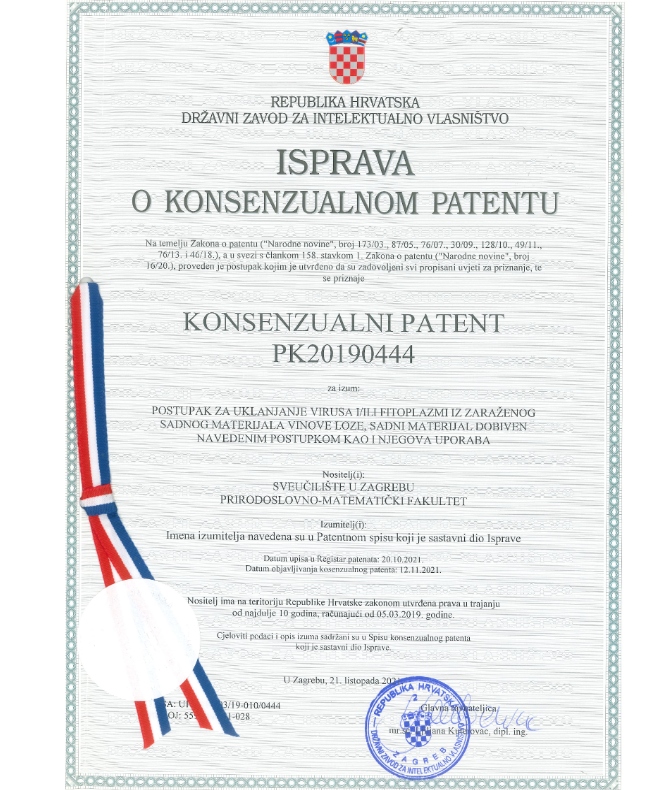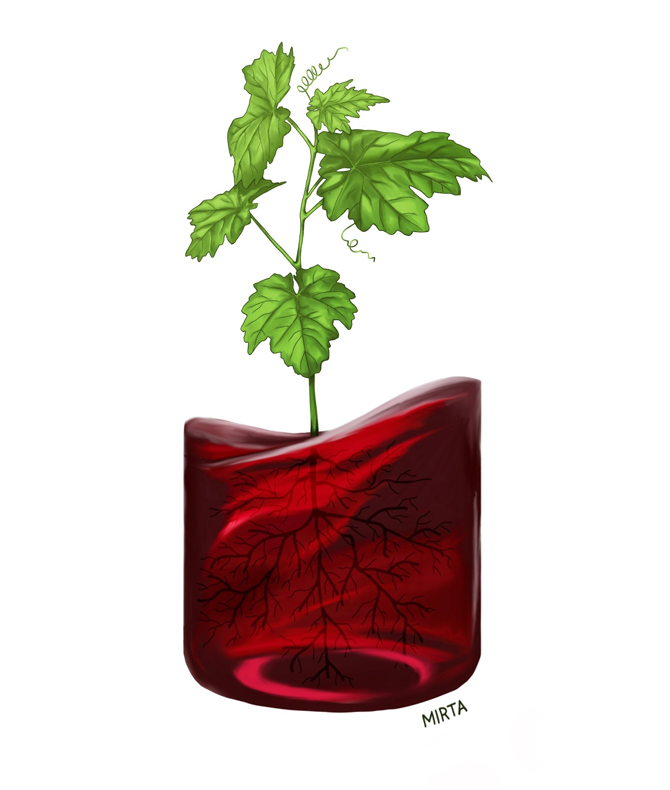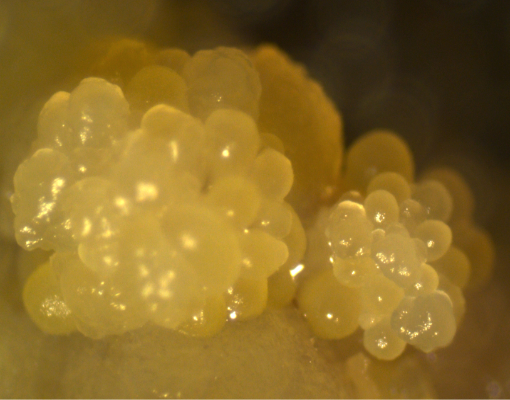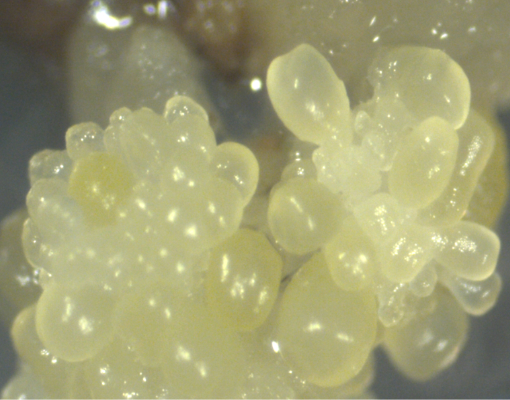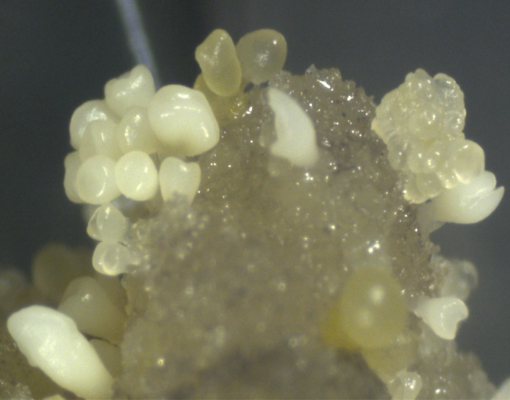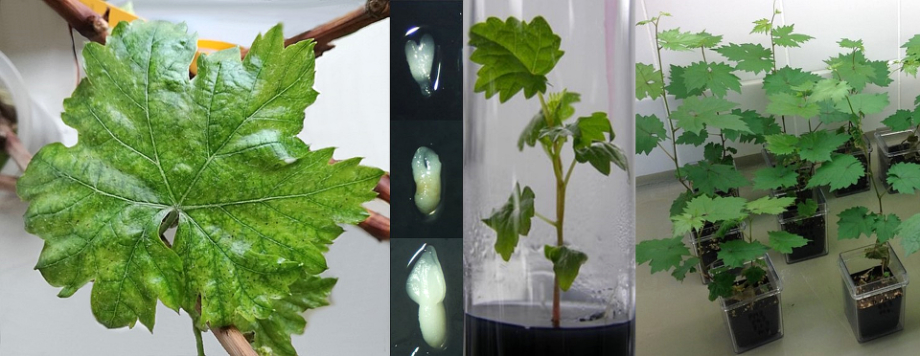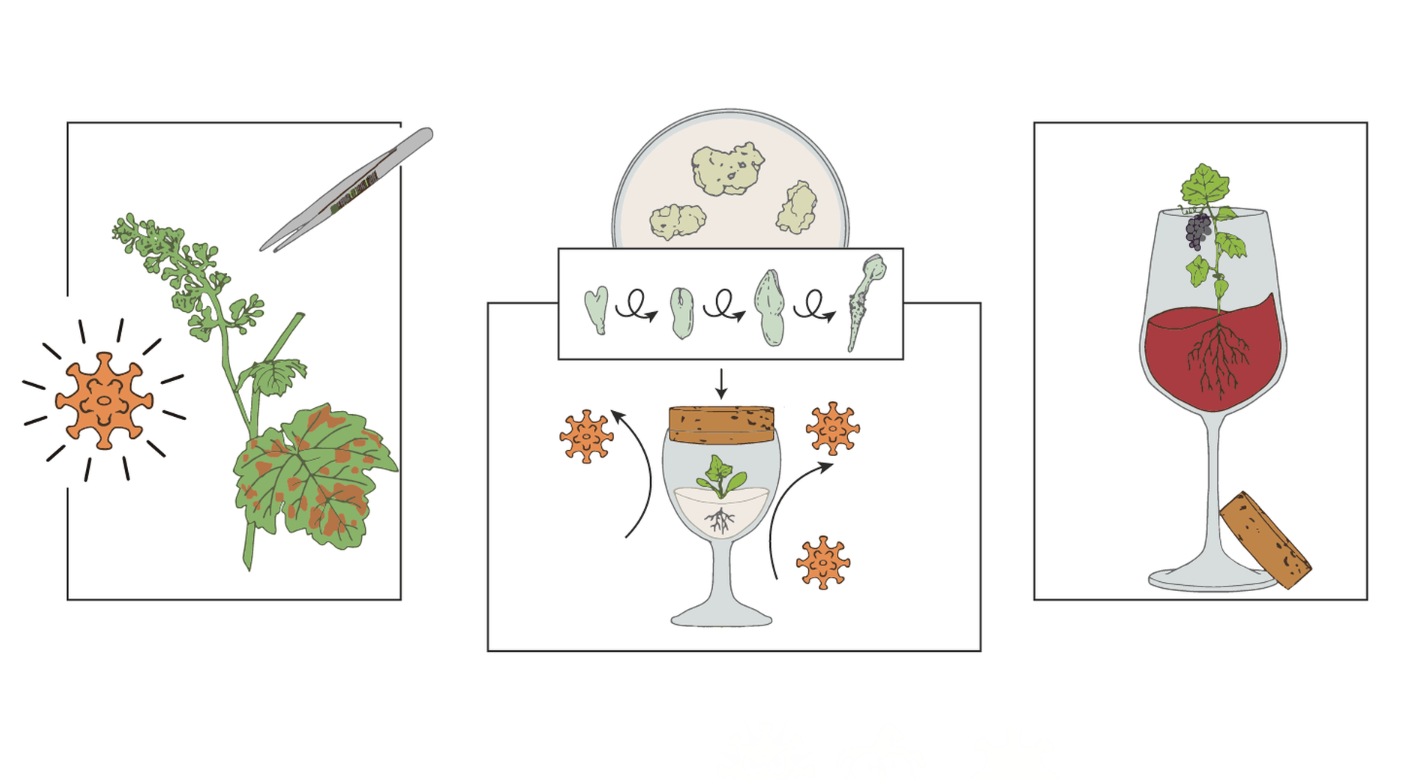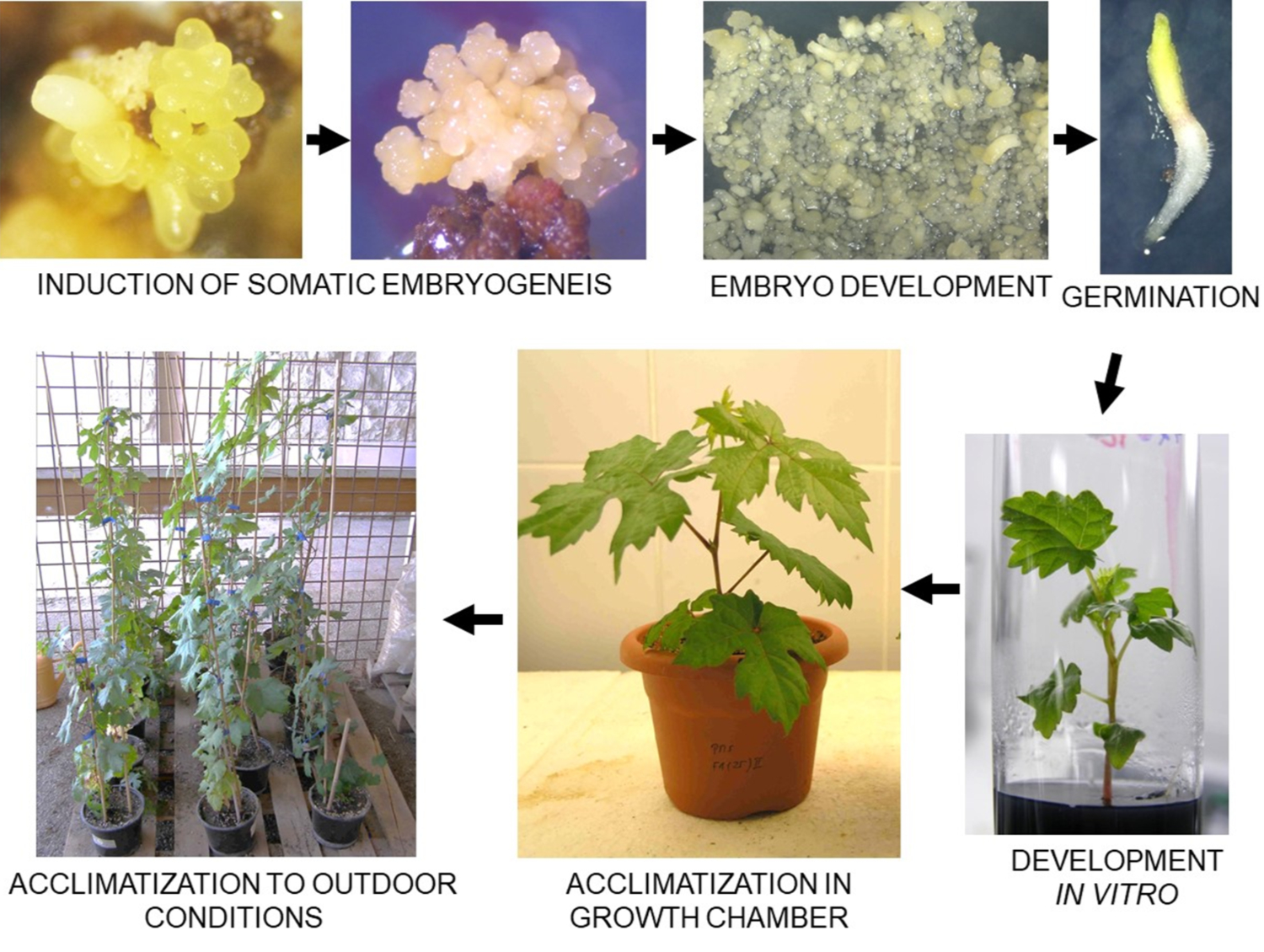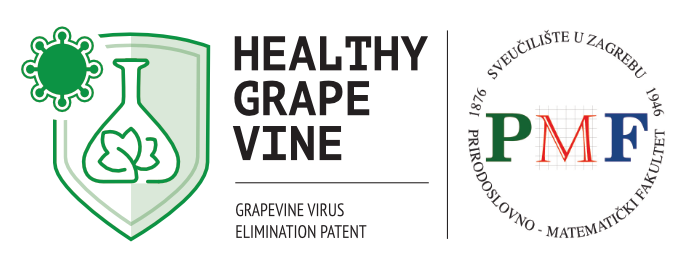HEALTY
GRAPE
VINE
Faculty of Science Virus elimination patent
Virus elimination in progres
Cultivated grapevine (Vitis vinifera ssp. vinifera) is a perennial woody plant species with bisexual flowers (pistil and stamens). The vine can reproduce sexually by self-pollination (pollination of a bisexual flower) or cross-pollination (pollination between individuals of the same or different varieties).
Given that the genes of the parents are “mixed” through sexual reproduction, the offspring of sexual reproduction loses its varietal identity (unique combination of genes). The well-known traditional varieties come from a long-ago accidental pollination and were originally obtained from seeds: winegrowers would notice the exceptionally qualities of a particular vine and begun to propagate it vegetatively with the aim of preserving the desirable properties. In order to preserve varietal identity grapevine varieties are propagated exclusively vegetatively by cuttings.
On the other hand, some modern varieties were made by breeders who crossed two varieties and selected the best individuals among the offspring.
Unfortunately, vegetative reproduction, in addition to its good qualities, has also fixed some disadvantages, primarily susceptibility to diseases and pests. Some of these problems could be solved by crossbreeding with other resistant vine species, but such hybrid plants are not welcomed by consumers and consequently neither by winegrowers. Fungal diseases and pests are controlled with chemical preparations. However, there is no chemical solution for grapevine viral deseases.
The grapevine is succeptible to 80 different types of viruses, some of which represent a serious economic problem.
Peculiary, vine viruses do not kill the plant in the short term, but reduce its vitality and shorten its lifespan.
Vineyards infected with viruses have the following problems:
lower yield
lower quality of must (acids increase, sugars decrease)
greater susceptibility to fungal diseases
greater sensitivity to high or low temperature
shorter lifespan of the vineyard
rooting of planting material is more difficult
less efficient fusion of the scion and rootstock
THE PROBLEM
From 2013 to 2019, about 11,300,000 vine cuttings were produced in Croatia (Ministry of Agriculture, Green Report 2019). However, according to the report of the Croatian Center for Agriculture, Food and Rural Affairs from 2018, only about 54% fall into the category of so-called certified planting material, which originates from basic (basic) mother plantations, proven to be free from viruses and other pathogens. Existing virus-free planting material in Croatia was obtained by selection of healthy individuals from vineyards, if such could be found, or outsourcing the virus elimination service by apical meristem culture to foreign institutions.
It is known that vine cuttings infected with viruses have worse growth parameters, lower yield, shorter lifespan and poorer wine quality. For example, the productive life of a vineyard infected with the GFLV virus is 15-20 years shorter (Andret-Link et al. 2004), and grapes, must and wine have a lower sugar content and increased total acidity. All this leads to considerable economic losses (Raški et al. 1983; Andret-Link et al. 2004).
LEGAL FRAMEWORK
The Ministry of Agriculture recently adopted amendments to the Regulations of placing on the market material for vegetative propagation of the vine (NN 49/2020), which adopts European Union standards regarding the quality of planting material. According to the propositions of the EPPO (https://gd.eppo.int/), for a virus-free certificate the vine must not be infected with these five viruses: ArMV, GFLV, GLRaV-1, GLRaV-3 (scions) for and GFkV (rootstock).
SOLUTION
The standard technique for obtaining healthy planting material is based on apical meristem culture in combination with cryotherapy. The overall efficiency of this method is from 8 to 24%, while some classes of viruses cannot be completely eliminated.
At the Faculty of Science (PMF) of the University of Zagreb, a patented laboratory procedure for healing infected grapevines (Figure 1) has been developed, which leads to the elimination of viral and other pathogens (e.g. phytoplasmas) through aseptic vegetative reproduction while preserving the varietal identity of the initial plant. The procedure was tested on a dozen autochthonous Croatian varieties (Figure 2). With this method, in a relatively short time, it is possible to obtain a large number of individuals completely free of viruses from infected plant material (Figures 3 and 4). Researchers from PMF brought the success of virus removal from the starting material to a level of 90-100% (Malenica et al. 2020).
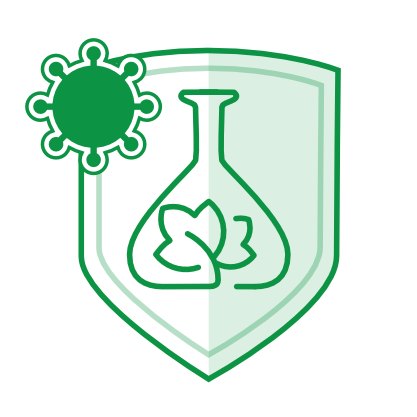
It is not possible to cure viral infections with chemical means. Plants infected with viruses must be removed from the vineyard and replaced with healthy ones, i.e. planting material for raising new vineyards must be virus-free from the start. The most economically important viruses that must not be present in planting material are (EPPO: https://gd.eppo.int/)
1. GFLV
grapevine fanleaf virus; vector – spear (lance?) nematodes
2. ArMV
Arabis mosaic virus; vector – spear (lance?) nematodes
3. GLRaV-1
grapevine leafroll – associated virus type1; vector– scale insects
4. GLRaV-3
grapevine leafroll – associated virus type1; vector– scale insects
5. GFkV
grapevine fleck virus; vector– mechanically by scissors (1. – 4. refers to scions; 5. refers to rootstocks).
Consensus patent document
The Faculty of Science (PMF) of the University of Zagreb is the holder of the Croatian patent for the process of healing grapevines from viruses and phytoplasmas. In agreement with stakeholders, winegrowers and nurseries, PMF will enter into an licensing agreement regarding the reproduction of the virus-free planting material.
PLAVAC MALI
BABIĆ
TERAN
Aseptic vegetative propagation (somatic embryogenesis) of some Croatian autochthonous grapevine varieties (the starting plant material was obtained from the collection of Croatian autochthonous varieties “Jazbina” of the Faculty of Agriculture in Zagreb).
From left to right: a young leaf developed from winter buds of the variety ‘Plavac mali’ with obvious symptoms of viral infections (edgesfan-shaped, with a chlorotic darkened area around the veins); somatic embryos of different developmental stages; obtained from them plants with well-developed shoots and roots in in vitro conditions; acclimatized cured plants in soil substrate (Malenica et al. 2020, Acta Botanica Croatica).
The process of aseptic vegetative reproduction enables obtaining cured vines that are genetically identical to the infected starting material. Above: schematic representation of virus elimination in plant tissue culture (illustration: Mirta Tokić). Below: the steps of the patented process of aseptic vegetative propagation that allow obtaining cured vines that are genetically identical to the starting (infected) plant.
LITERATURE
Andret-Link, P., Laporte, C., Valat, L., Ritzenthaler, C., Demangeat, G., Vigne, E., Laval, V., Pfeiffer, P., Stussi-Garaud, C., Fuchs, M. (2004) Grapevine fanleaf virus: Still a major threat to the grapevine industry. Journal of Plant Pathology 86, 183–195.
Malenica, N., Jagić, M., Pavletić, B., Bauer, N., Vončina, D., Zdunić, G., and Leljak Levanić, D (2019) Somatic embryogenesis as a tool for virus elimination in Croatian indigenous grapevine cultivars. Acta Botanica Croatica 79(1), 26-34.
Raški, D.J., Goheen, A.C., Lider, L.A., Meredith, C.P. (1983) Strategies against grapevine Fanleaf virus and its nematode vector.
Plant Disease 67, 335-339.
LINKS
Based on the fact that patented technology developed at PMF in Zagreb has shown to be effective in eliminating the main and often of stubborn types of grapevine viruses, we offer to Croatian winegrowers and nurseries and other stakeholders in production certified planting material the following services:
Virus elimination from selected grapevine varieties by the process of somatic embryogenesis.The client provides the starting plant material forvirus elimination. At the end of the procedure, he gets cured and acclimatized potted plants.
Fast germination of F1 crosses in vine breeding procedures (after pollination by the customer): we can get seedlings from F1 seeds of a cross in a few weeks, thus skipping several months compared to the standard procedure.
Multiplication of a selected variety or an individual cured by somatic embryogenesis up to several hundred individuals in a short time.
Keeping the cured clone under in vitro conditions during the agreed period.
Elimination of phytoplasmas from phytoplasma-infected varieties or individuals.
The client receives proof of “viral purity”.
